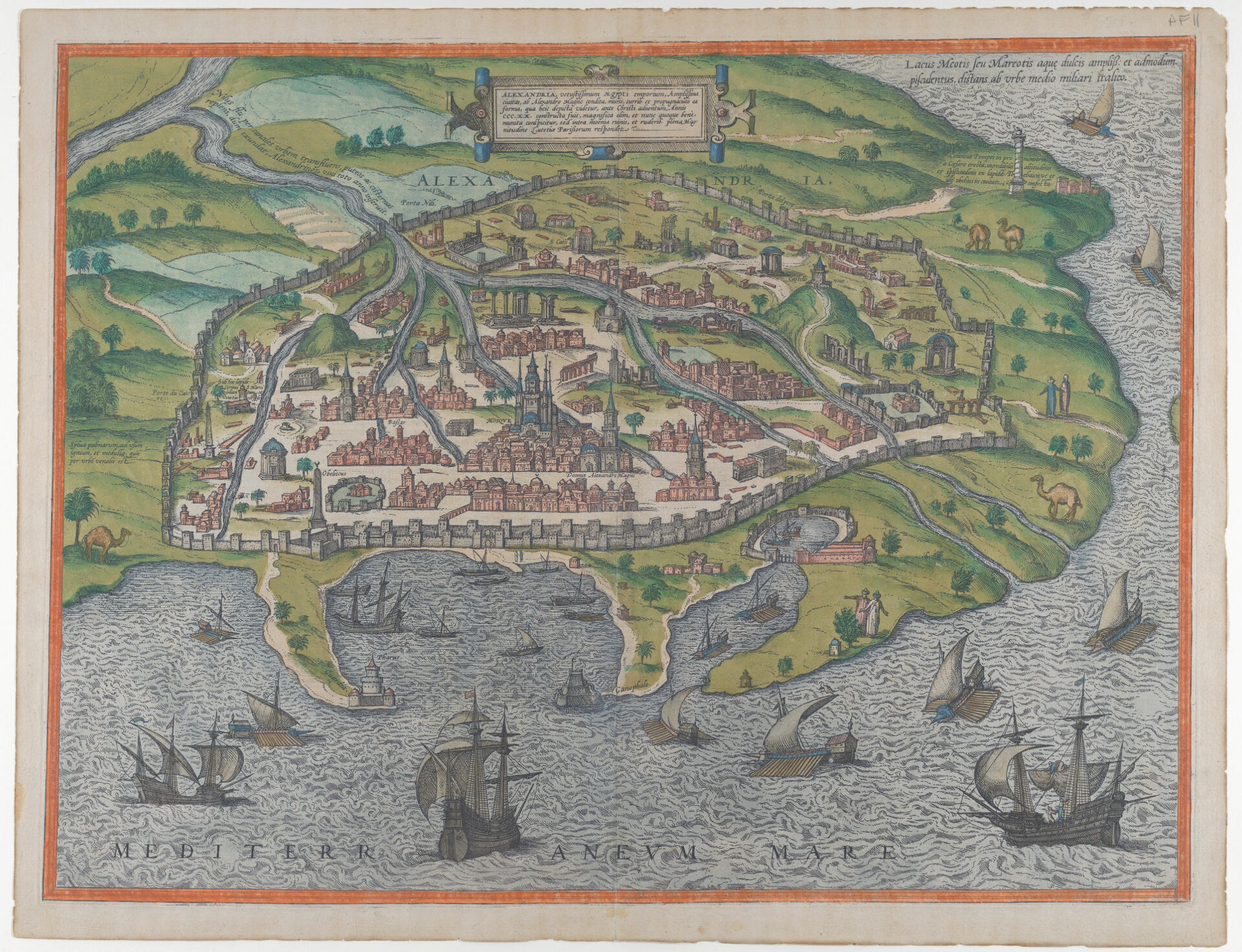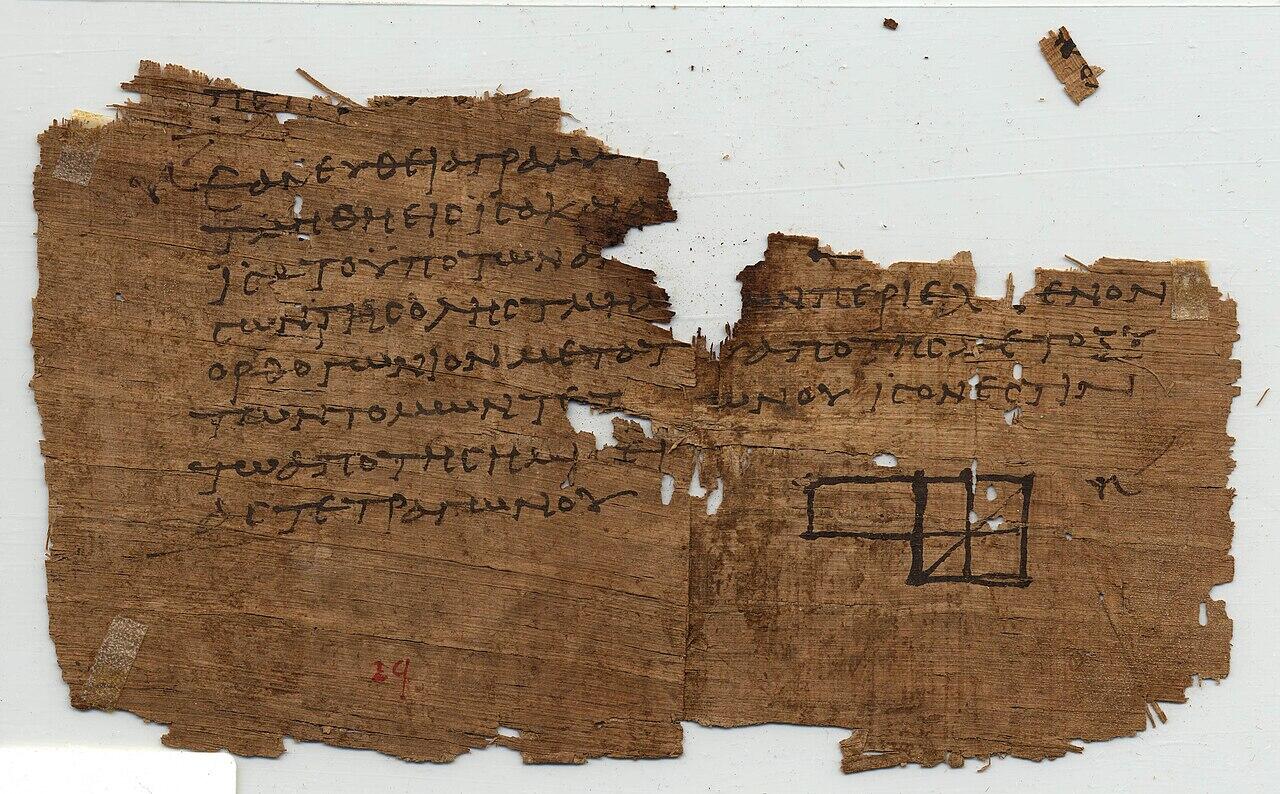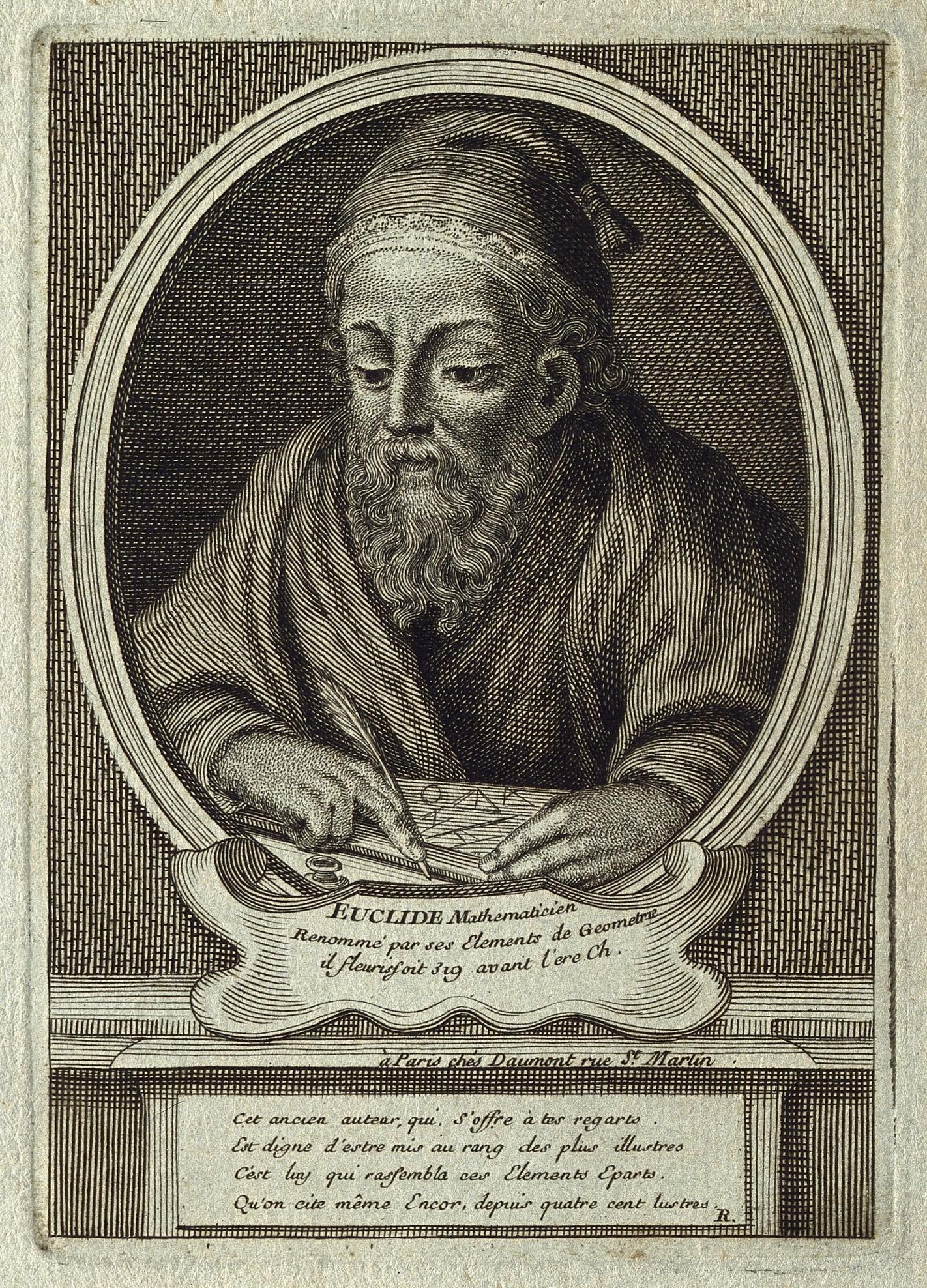Euclid, active around 300 BCE in Alexandria, remains one of the most influential figures in the history of mathematics. Little is known about his personal life, but his work has influenced how maths is studied and taught for more than two thousand years. Before Euclid, mathematical knowledge existed as a confusing mix of various results and techniques handed down from different thinkers. Yes, there were rules for calculation, and some understanding of geometry, but there wasn't a unifying structure to hold it all together.
Fortunately, Euclid would make it his life's mission to change this, putting pen to paper and writing his master work the Elements. This series of thirteen books gathered these earlier discoveries into a clear and logical framework. Today, Elements stands as a timeless text, setting out geometry, number theory, and reasoning in a form that has endured for centuries.
Key Takeaways
- Who was Euclid? A Greek Mathematician who worked in Alexandria, somewhere around 300 BCE. Known as the “Father of Geometry”, comparatively little is known about his actual life, but his influence in mathematics has lasted over two millennia
- Euclid's greatest work: Elements, was a set of thirteen books that organised previous mathematical discoveries into a single logical framework. It covered both geometry and arithmetic, essentially making it the first comprehensive maths textbook to exist
- How did his method work? Begin with a few assumptions (called axioms), then prove everything step by step. This type of approach set the gold standard for logical reasoning in mathematics.
- Main Topics in Elements: Plane Geometry (lines, triangles, circles), solid geometry (polyhedra and spheres), number theory (primes, divisibility, ratios), irrational numbers, and the Euclidean Algorithm.
- The influence of Elements: Elements was translated into many languages, copied across cultures, and studied for centuries. In fact, at one point, it was the most widely read book after the Bible.
- Euclid's Legacy: Euclid’s ideas guided the teaching of mathematics for centuries and paved the way for later discoveries, including non-Euclidean geometry.

Euclid and the Birth of Systematic Mathematics

By the time Euclid was working in Alexandria, Greek mathematics already had a long history. In the years beforehand, Pythagoras had talked about numbers and ratios, while Hippocrates of Chios, Eudoxus, and the mathematician Thales had explored and developed their own ideas of geometry and proportion, respectively.
However, this knowledge was very scattered, mostly preserved in fragments, and lacking any sort of common structure. Euclid's genius was not in discovering everything from scratch, but in finally giving mathematics a foundation. How did he do this? He used something called the Axiomatic method, a way of proving results in a step-by-step manner from the simplest of starting points.
📘 The Axiomatic Method: Step by Step
- Start with axioms - these are simple rules accepted as true (e.g “a straight line can join any two points”)
- Prove basic results - using those rules, you can point out small facts, such as how two circles can meet at a point or how the angles of a triangle add up to two right angles
- Build on them - combine earlier results to prove more complex theorems like the properties of parallel lines or rules that govern similar shapes
- Create a system - eventually, the whole of geometry and number theory connects back to those starting rules
Check for maths tutors with proven record of achievements here.
What Are Euclid’s Five Postulates?
In simple language, these are very straightforward mathematical rules that Euclid treated as obviously factual - the kind of statements that are so obvious you don't need to prove it. From these basic starting points, he developed the entire framework of geometry.
- A straight line can be drawn between any two points.
- A finite straight line can be extended indefinitely
- A circle can be drawn with any centre and radius
- All right angles are equal
- If a line crossing two lines makes the inside angles on one side add up to less than 180°, those two lines will eventually meet on that side
While the first four rules are pretty self-explanatory, the fifth one (known as the parallel postulate) is a little more complicated. In fact, for centuries, mathematicians tried to prove this rule from the others but failed. Their struggles later inspired the creation of non-Euclidean geometry, where the parallel postulate is replaced or altered.

Euclid's Early Life: The Man Behind the Maths

Despite his influence, Euclid himself remains a shadowy figure whom historians know little about. It's still a hot topic of debate when Euclid was born, with most placing his life somewhere around 300 BCE during the reign of Ptolemy I in Alexandria.
However, some historical sources suggest he may have studied in Athens beforehand, possibly in the tradition of Plato's Academy, before eventually arriving at his new home in Egypt. Unlike his predecessors, Euclid did not create his own school for mathematics.
What we can say with confidence is that Alexandria was the perfect place for Euclid's career. The city's famous great library and museum draw scholars from far and wide across the Mediterranean. It was here that Euclid began teaching and writing, gradually attracting a circle of loyal students who helped preserve and spread his unique ideas.
Euclid’sElements: The Blueprint of Mathematics
What makes elements remarkable isn't just the mathematics it contains but the way the author presented it. For the first time, readers could see the subject laid out in a carefully organised order.

Each book opened with clear definitions and a short list of assumptions, then moved on to propositions that either proved a statement or showed how to construct something with only a straightedge and a compass. The style was revolutionary, turning mathematics into a structured subject that could easily be taught to students, resulting in its continued popularity long after Euclid's passing.
Check for Maths tutor in Southampton here on Superprof.
For much of recorded history, Elements served as the standard introduction to mathematics. It was studied in ancient Greece, translated into Arabic in the Islamic Golden Age, and later became a fixture of European education after the invention of printing. From classrooms to universities, it remained the reference point for learning geometry and number theory well into the 19th century
What's Inside the Thirteen Books of Elements?
Legend has it that Euclid said this to King Ptolemy I when asked for an easier way to learn mathematics, although historians doubt the authenticity of the statement:
There is no royal road to geometry.
Euclid
As mentioned, Element's isn't a single tome but actually a collection of thirteen books, each of which deals with a different area of mathematics (when combined, they become a sort of course readers could follow along to). In this section, we'll briefly go over what area of mathematics each book covered, detailing what Euclid discovered. Check for a maths tutor near me here.
🔎 A Quick Map of the Thirteen Books
Beyond Elements, Euclid was believed to have written several other texts, like Data, Optics, Phaenomena, and Division of Figures. Unfortunately, only fragments of these remain, but they show his interests stretched from geometry to astronomy and even music.
Euclid's Lasting Legacy
All in all, Euclid's way of reasoning and discoveries did a lot more than just organise geometry. It had an incredible impact on how people from all over the globe thought about knowledge itself, leaving a mark on various fields, including philosophy, science, and even the technology we're so reliant on today. For more famous mathematicians from antiquity, check out the great Archimedes!
Philosophy
Descartes and Spinoza admired Euclid's method, going on to use axioms and proofs to frame their own systems of thought
Science
Newton wrote his Principia in Euclid's style, and centuries later, questions about the parallel postulate also helped inspire Einstein's theory of relativity
Mathematics and Tech
The Euclidean Algorithm and its proof of infinitely many primes remain core to number theory and are used in encryption, coding, and computing today
















